I thought vacuum metal casting would require a giant rig the size of my car, or that jewelry casting machine that can only do tiny parts like rings. Turns out it's both cheap and easy to build one for your application! DavidF from AlloyAvenue forums was nice enough to share the details.
All that's required is a trip to a steel yard to get a pipe and a base plate. I also got a barbed fitting (MPT) to connect to my vacuum pump. After drilling a hole in the large steel pipe I threaded it with an MPT tap, screwed the fitting in, then used RTV (high temp silicone sealant 300 F) to attach pipe to the base plate and put some RTV around the fitting as well. Flanged perforated flasks (ordered from jewelry supply or custom-built) go in the pipe. The flange lip hits the top of the pipe and a silicone gasket (also bought, or you could use RTV again) provides a vacuum seal. When investment mold is inside the vacuum flask with wax model already melted out, just start the vacuum before pouring metal. Hydrogen and other gases that cause porosity are sucked out through dried investment walls, and the metal fills all the details.
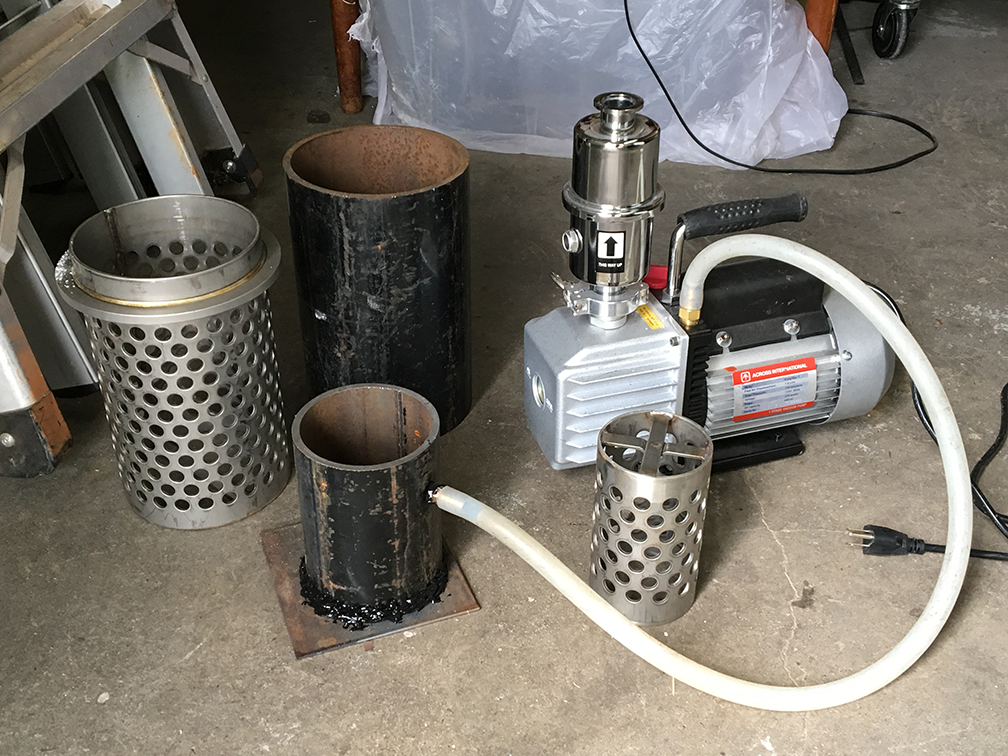
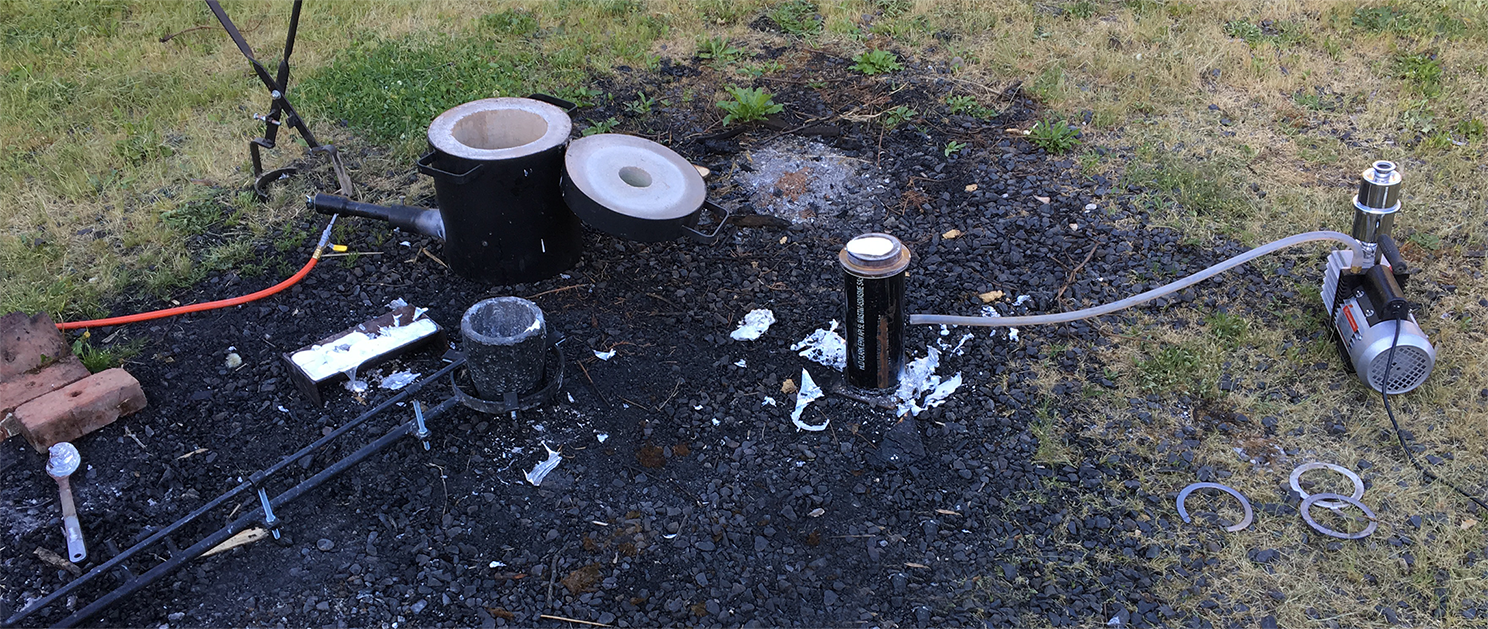

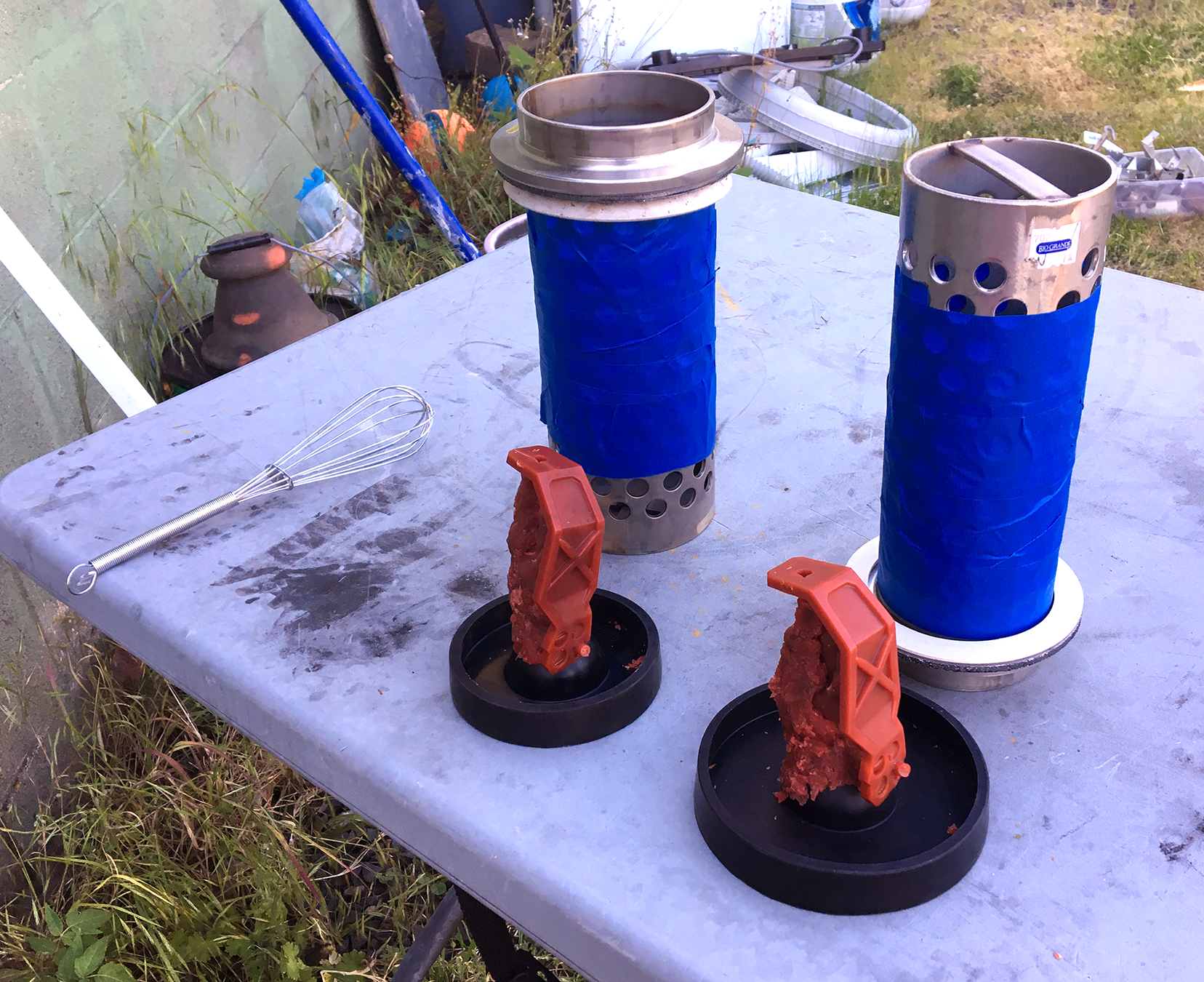
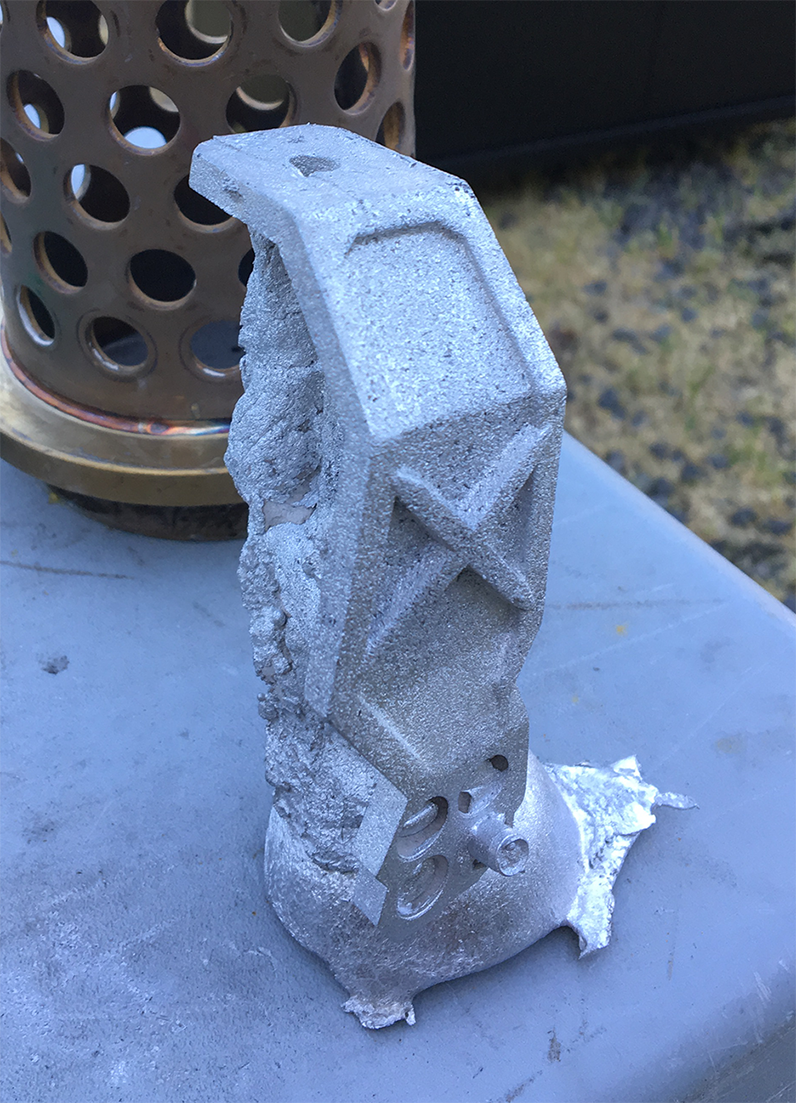

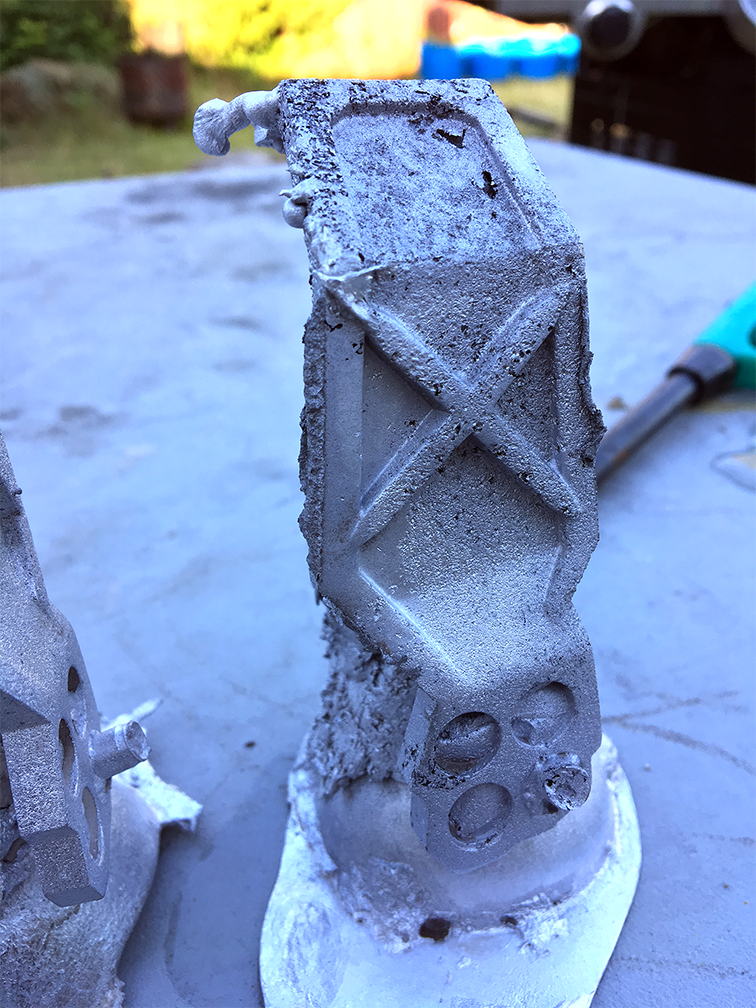
As you can see I still have issues with temperature control, and possibly the way I melt the metal and the alloy I use, but results are markedly better, especially the fill.
To summarize here:
- Go through the models you want to cast, and note bounding box dimensions
- Buy or build (if on budget) perforated vacuum casting flasks with flanges, that would fit those dimensions. Rio Grande offers a variety of pretty big (up to 8") diameters. Anything bigger, you would have to weld & drill a custom vacuum flask.
- Buy silicone gaskets along with vacuum casting flasks, or just use a layer of RTV sealant if on budget. I also recommend graphite gaskets on top of silicone (for the side that touches the very hot flask) and a rubber button base for wax models, because it creates a super nice funnel shape for pouring.
- You will need a fairly strong vacuum pump (~7 cfm), Rio Grande has those too, or you can restore a used one if on budget.
- A silicone tube to connect vacuum pump to the vacuum rig
- Build the vacuum rig as above. Use steel pipe & base plate dimensions to ensure flasks can slide into the rig with minimal clearance. I got three sizes to be safe: 3.5", 4" and 8" to fit 95% of all exosuit parts.
 Val
Val
Discussions
Become a Hackaday.io Member
Create an account to leave a comment. Already have an account? Log In.